20.1 Where did they come from ? Plants are thought to have evolved from GREEN ALGEA....Charophyceae
Likely Characteristics that came from these protist are...
a. Multicellular bodies which led to the development of cells and tissue.
b. Cells with small channels to communicate to other cells.
c. Reproduction that involves sperm fertilizing an egg.


Earliest plant fossil date back to 450 mya.
Based on the image above, what type of plants evolved most recently?
Adaptations of Land Plants
1. Retaining Moisture: Plants need to be able to retain moisture. A CUTICLE IS A WAXY, WATERPROOF LAYER THAT HELPS HOLD IN MOISTURE THROUGH TINY HOLES CALLED STOMATA.
2. Transport Resources: Plants must be able to get water and nutrients using a VASCULAR SYSTEM: "pipelines" that carry resources up and down to different parts of the plant.
Composition: Two networks of hollow tubes.
a. xylem: carries water and dissolved minerals UP from the roots to the rest of the plant.
b. phloem: carries the products of photosynthesis food throughout the plant.


3. Growing Upright: Plants need structure to support their weight it comes from a material calledLIGNIN: Which is a material that is found in the cell walls of plant tissues.
4. Reproduce on land: Not all plants need free standing water to reproduce Pollen and seeds are adaptations that allow seed plants to reproduce free of water. Pollen is a sperm forming structure.
Male reproductive part stamen.
Female reproductive part stigma.

20.2 Classification of Plants
The first kind are seedless non vascular and vascular plants.(earlistest ones).
Mosses and their relatives are seedless non-vascular plants.
 Like all non-vascular plant,mosses need to live in moist environments.
Like all non-vascular plant,mosses need to live in moist environments.
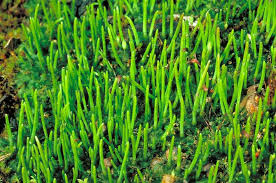
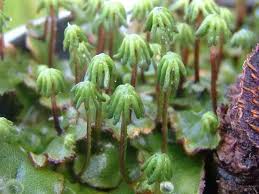 Hornworts 1-4 cm Thallose Liverworts
Club mosses and ferns are seedless vascular plants.
Club moss <=20CM Fern 10-25M
Hornworts 1-4 cm Thallose Liverworts
Club mosses and ferns are seedless vascular plants.
Club moss <=20CM Fern 10-25M
Still need water for reproduction,can stand off the ground?
(tropics and subtropics.)

 ferns and mosses produce spores instead of seeds to reproduce.
ferns and mosses produce spores instead of seeds to reproduce.
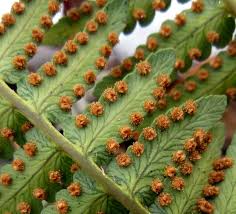
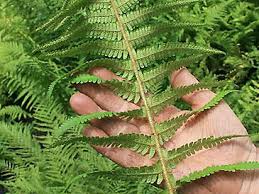
Seeded Plants
The second kind are the plants produce seeds. These are classified on whether or not seeds are enclosed in a fruit.
A seed is a storage device for a plant embryo.
They include the Cone-bearing plants and Flowering plants and have advantages over their Ancestors
- Can reproduce without free standing water.
- Produce pollen which can be carried by wind or animal.
- Their seeds nourish and protect embryo.
- Seeds allow plants to disperse to new places.
How are fruits formed from flowers?
Where do pears come from?
Banana Flower

Examples BELOW.


Pine trees Papaya


Pollen carried by wind. Ginko Biloba
GYMNOSPERM: seed plant whose seeds are not enclosed in fruit.
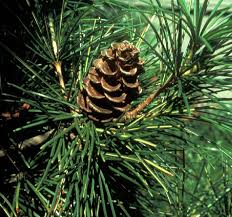
ANGIOSPERM: is a seed plant that has seeds enclosed in some type of fruit. Common name flowering plants.

Questions
- What are the habitat requirements for seedless non-vascular plants?
- What are the evolutionary advantages of vascular system?
- What are the evolutionary advantages of seeds vs spores?
20.3 Diversity of Flowering Plants
- More than 300 species
- classified as TWO types:
Monocots: Flowers that part in multiples of three.
 6 Petals
6 Petals
Dicots: Flowers that part in multiples of four and five.
 5 Petals
5 Petals

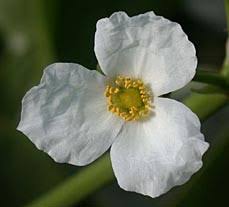

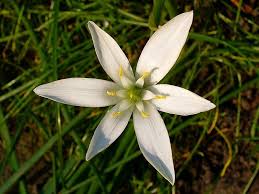

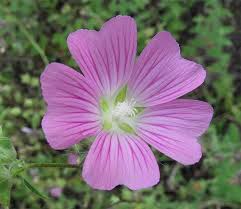
Plants can also be identified by their leaf shapes.


Arrangement of leaves

Seed Plants
22.5 PLANT HORMONES AND RESPONSES
What are hormones?
Hormones are messengers in one part of the
organisms that
stimulates or suppresses the activity of a cell in another part.
When are they released?
They are released in response to internal or external
environments and regulate plant function.
Plants can respond to light, touch, gravity and Seasonal
Changes.
( Light ) Phototropism: tendency of plant to grow toward
response to touch.


Venus flytrap can close in less than a second its native to wet and muddy areas of North and South Carolina.


Mimosa Pudica
Thigmotropism Video
(Gravitational pull) Gravitropism: plants up or
down growth in response to gravity.
Mechanism where the shoot grows up towards soil and the
root down towards the soil. Regulated by a hormone called auxins.



Gravitropism Video
(lenght of day and nights) Photoperiodism: A response to
the changing lengths of day and night .
Plants react to shorter days and longer nights by hibernating.
Plants, like animals, want to save energy when possible. Ex: In winter months they react by shutting down to use less
energy.
Still need water for reproduction,can stand off the ground?
(tropics and subtropics.)
A seed is a storage device for a plant embryo.
They include the Cone-bearing plants and Flowering plants and have advantages over their Ancestors
- Can reproduce without free standing water.
- Produce pollen which can be carried by wind or animal.
- Their seeds nourish and protect embryo.
- Seeds allow plants to disperse to new places.
How are fruits formed from flowers?
Where do pears come from?
Banana Flower
Examples BELOW.
Pollen carried by wind. Ginko Biloba
Questions
- What are the habitat requirements for seedless non-vascular plants?
- What are the evolutionary advantages of vascular system?
- What are the evolutionary advantages of seeds vs spores?
20.3 Diversity of Flowering Plants
- More than 300 species
- classified as TWO types:
Monocots: Flowers that part in multiples of three.
Dicots: Flowers that part in multiples of four and five.
Plants can also be identified by their leaf shapes.
Arrangement of leaves
Seed Plants
22.5 PLANT HORMONES AND RESPONSES
What are hormones?
Hormones are messengers in one part of the
When are they released?
Plants can respond to light, touch, gravity and Seasonal
Venus flytrap can close in less than a second its native to wet and muddy areas of North and South Carolina.
Mimosa Pudica
Thigmotropism Video
Mechanism where the shoot grows up towards soil and the
Gravitropism Video
(lenght of day and nights) Photoperiodism: A response to
Plants react to shorter days and longer nights by hibernating.
Plants, like animals, want to save energy when possible. Ex: In winter months they react by shutting down to use less
